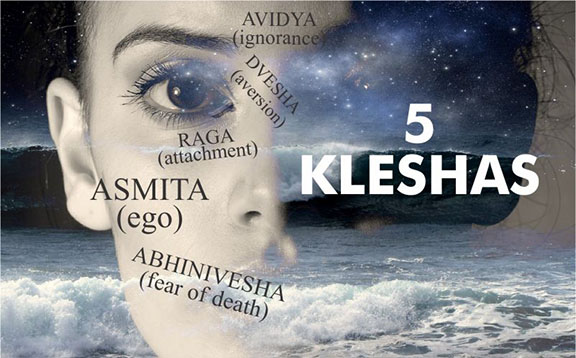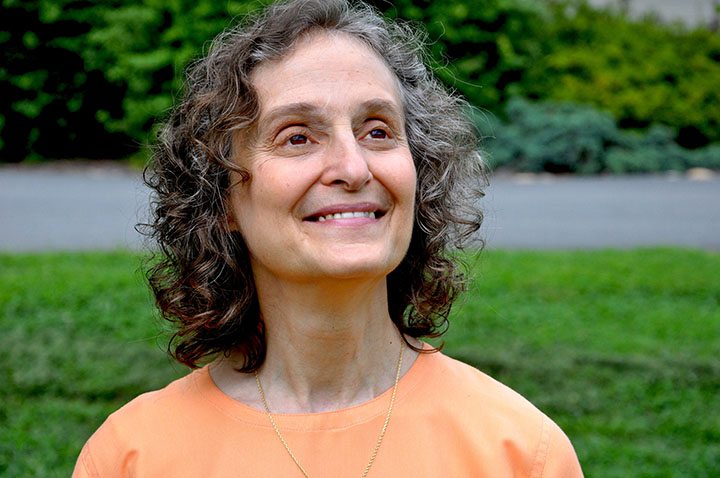 Everyone wants to be happy, but the happiness we seek is elusive. Our lives are spent seeking happiness through possessions, positions, relationships; even our addictions are a misguided search for happiness. And what do we find? Generally, we get a little happiness mixed with a lot of problems and pain.
Everyone wants to be happy, but the happiness we seek is elusive. Our lives are spent seeking happiness through possessions, positions, relationships; even our addictions are a misguided search for happiness. And what do we find? Generally, we get a little happiness mixed with a lot of problems and pain.
A little analysis will show that, if we expect permanent happiness through external attainments, we are destined for frustration and failure. This is because everything external is part of nature and, as such, is subject to change. Think of all that has changed in your own life over the past ten years: all the people who have come and gone, changes in your living situation, your work, your finances, your health, or simply how you spend your days. In everyone’s life, the pendulum swings between pleasure and pain, loss and gain, praise and blame.
In the midst of all the change, where is the happiness that we are seeking? Raja Yoga provides an answer: Our essential nature is that supreme happiness. It’s as if we are looking for our glasses, while all the time they are perched on top of our head.
Our true nature is happiness. As Swami Satchidananda often said, to experience one’s true nature is like trying to see your own face. To see your face, you need a mirror. We have a mirror within—the mind. If the mirror of the mind is straight and clean, we see an accurate reflection and experience the peace and joy within. However, if the mirror is colored, curved, or twisted, we see a distorted reflection. Even though we are still perfectly fine, we see that reflection and think that’s who we are. Because of this false identification, we suffer in life.
We forget our true nature, and then we look for external things to make us feel better, which only perpetuates the problem. First of all, as was already stated, we can never find lasting happiness this way because everything external is subject to constant change. And secondly, every time the mind goes outward to experience objects, it takes their form and gets colored by them. Thus, the mental mirror is continually distorting, and we never get to see the true reflection.
The very act of seeking happiness outside prevents us from experiencing the true happiness within. Instead, if we restrained the mind from going outward and let it rest calmly within, we would experience the happiness we are seeking. This is the essential teaching of Raja Yoga. When we forget our true nature and seek happiness outside ourselves, that is the basic ignorance, and the root of all suffering.
This situation leads us to some ultimate questions: Why don’t we remember our true nature? Why do we identify with the distorted reflection? Why is there suffering? An explanation is provided in the Yoga Sutras of Patanjali, in which the teachings of Raja Yoga are presented. Raja Yoga can be understood as an exploration into the nature of suffering and how to overcome it. Patanjali speaks of basic defects, or afflictions, of the mind called kleshas. These are the underlying cause of suffering.
Ignorance (avidya) is the first klesha. It’s defined as regarding the impermanent as permanent, the impure as pure, the painful as pleasant, and the non-Self as the Self. We don’t understand who we are. We forget our true nature and, if that weren’t bad enough, we think we are something else. That’s when the next klesha, egoism (asmita), comes in. We identify with what is closest to us, the mind and the body, and we think that’s who we are.
Then we become attached to all that we find pleasurable and averse to all that is painful. This is known as raga and dvesha. We are ever running toward things we think will make us happy and away from things we find painful, leaving little time for simply staying still, poised, balanced, resting in the supreme happiness within. The final klesha is clinging to bodily life (abhinivesha). We cling to the body because we think that defines our existence, who we are. Additionally, we have had many births and died many times before, leaving painful samskaras (mental impressions) associated with death in the deeper levels of the mind.
You can picture the kleshas as a clever design feature, integrated into the fundamental hardwiring of the mental computer. We are hardwired to approach life and to see things in a distorted way. Our sense organs can only function within a limited range. We can’t even hear sounds, for example, that are audible to a dog or a bat. Imagine how different the world would look if we had microscopic eyes. As a vegetarian, we couldn’t even comfortably drink a glass of water! Then, this input gets interpreted by a mind that is also running interpretive software based on all the conditioning it has received from family, friends, society, schooling, religion, etc. We are trying to understand the truth, using a limited instrument that is incapable of totally grasping it and distorts what it can grasp.
We are steeped in ignorance. We forget the peace and joy that is our true nature, and we seek happiness outside ourselves. The world is just not set up to give us lasting happiness. In fact, its purpose is to teach us the contrary, that one has to go beyond the limitations of the body, senses, and mind to experience true joy.
Patanjali recognized this predicament when he said that to one of discrimination, everything is painful. We invest so much effort to get what we want. Once we get it, however, there are three problematic consequences: (1) There may be anxiety or fear over losing what has been gained. (2) The resultant impressions left in the mind from the pleasure of attaining a desired object will give rise to new cravings. In other words, fulfilling a desire only fans the flame; it’s like pouring oil on fire. (3) The mind is never satisfied for long. The mind, itself, is part of nature, and as such, is subject to constant change. So, what gave us pleasure on one day, no longer satisfies us the next.
So, how do we bypass this hardwiring, short-circuit this predicament, and find true happiness? How is it possible to cease to identify with the body and mind, and transcend suffering? The story that Sri Swami Satchidananda told of Sri Ramana Maharshi shows that it can be done. In his later years, Sri Ramana developed cancer on the arm. He just wanted to let the karma purge itself out. However, his disciples wanted to treat it and called a doctor.
The doctor came and announced that surgery was necessary, so Sri Ramana consented. However, when the surgeon went to administer anesthesia, Sri Ramana refused. The doctor cautioned him, saying that it was going to be a very painful procedure, but Sri Ramana just told him to proceed.
The doctor performed the surgery, and as others watched, so did Sri Ramana. In fact, he spoke to his arm in the following manner: “You must have gotten into a lot of mischief before, because look at all the suffering you are having to endure. Well, face it and purge it out.” How could he do this so calmly? He could do so because he wasn’t identified with the body or the mind. He was established in his true Self. The Bhagavad Gita describes Yoga as, “disconnecting your identification with that which experiences pain,” in other words, the body and mind. Sri Ramana was established in that state of realization, and we can attain it as well.
Through the teachings of Raja Yoga, we are presented with a skillful way to accomplish this goal. A simple analogy will help us to understand the underlying method. Imagine, for a moment, how an automobile runs. The movement of the piston gets transferred to the wheels, and then the car moves. When we wish to stop the car, we don’t apply the brakes to the piston where the movement began. Instead, we apply them to the wheels, the most visible expression of the movement, and then everything gets stopped in the reverse order.
Going back to the kleshas, we want to dispel ignorance, which is the beginning of the chain that results in all suffering in life. So, we begin by addressing the most visible expression of ignorance, which is attachment. Raga, dvesha, and abhinivesha are all expressions of attachment. We are attached to the body, to all that gives us pleasure, and to avoiding all that causes us pain. If we can let go of our attachments, our minds will become peaceful, and we will be able to experience our true nature.
The essential question, then, is how do we let go of attachment? Patanjali gives us the method in Book 1, sutra 12, which states, “The mind is brought under control by practice and non-attachment.” It’s very difficult to let go of our desires and attachments; that’s why a two-sided approach is needed. Through practice we gain the strength and clarity to release our attachments.
Swami Satchidananda would often say that the practices are like soaps. Hatha Yoga is soap for the physical body; pranayama is soap for the subtle body; and meditation is soap for the mind. Rather than tell someone to stop doing a harmful behavior, he would tell that person to just practice Yoga. If someone wished to stop smoking, for example, he would recommend bhastrika pranayama to clear out the nicotine deposits in the lungs. Once the lungs were clear, the craving would cease, and the smoking habit would just fall away.
Yoga never speaks of suppression. If you suppress a desire, it will only spring back forcefully when you relax your vigilance or are a little weak. Instead, it says to attach and detach. Just start doing the positive, and automatically you’ll stop doing the negative. Engage in Yoga practice and, eventually, you will be able to resolve and release your attachments. When the mind is free of all desire and attachment, it becomes pure and steady, and we experience our true Self. This approach constitutes the underlying methodology that is threaded throughout the Yoga Sutras. It is, in effect, Patanjali’s main exit strategy for overcoming suffering.
About the Author:


